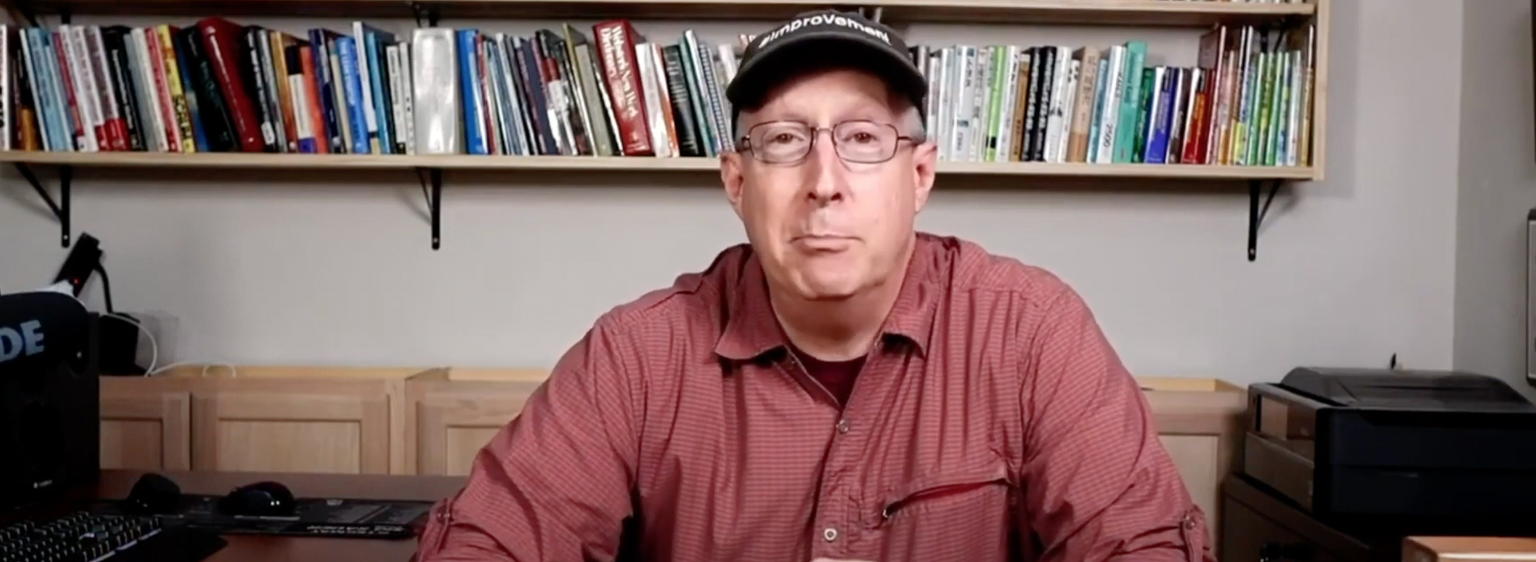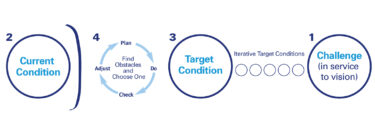Part four of eight. Watch the others:
- Part one, A Focus on Muda
- Part two, Overproduction
- Part three, Excess Inventory
- Part five, Motion
- Part six, Waiting
- Part seven, Defects
- Part eight, Processing
Hi everyone. This is Art Smalley, president of Art of Lean, Incorporated. Today, on behalf of the Lean Enterprise Institute, we’re going to do a series of short video clips, each one about the seven classic forms of waste from the Toyota Production System. Stick around. I think you’ll enjoy it.
Waste No. 3, conveyance. Now, in reality, the wastes aren’t numbered the way I’m numbering them, in order, one, two, and three. There’s debate over how to name them and how to number them. But I always like to think about them this way. If the worst waste of all is overproduction, then it’s got to come first. Overproduction results in inventory, which has to be then moved and conveyed. So that one-two-three grouping works logically for me. It doesn’t make a great acronym or anything, but it helps me logically think about the order of the first three wastes.
Conveyance is a tricky one, just like we saw with overproduction and inventory. It’s tough to say what’s value-add and what’s waste. In a simplistic sense, you can say, well, it’s all waste, right? The customer’s not paying me to do that, but that’s a naive way to look at it. Good luck, just letting stuff sit on the floor and getting it to your customer. Somehow it has to be delivered from a supplier. Okay. Somehow it has to be moved from your receiving docs to an area for assembly and work. Somehow it has to go from intermediate processes to next-step processes. Somehow it has to go from next-step processes to final areas, from final areas to shipping, then to shipping, and ultimately to a customer. That doesn’t happen automatically. And we, at this point, don’t have a Star Trek beaming technology. So you’re going to have to do some conveyance.
The nuanced way we thought about it in Toyota is that there is some minimal amount of necessary transportation and conveyance you have to do – the shortest line from point A to point B in the minimum number of moves. You can call that value-add, or if that’s a stretch for you, okay, say it’s incidental waste, but it’s necessary for the current state of the process. Somehow we have to move things between these stages in order to eventually deliver them to a customer, which they expect.
The way we approach this generally in material handling is the same way we do with standardized work. You break it up into routes. There can be external transportation routes. There can be routes specific for movement from final areas to shipping areas. There can be internal routes between the process areas. And there could be dedicated routes more at the receiving end, and of course, supply inbound routes. All those have specific routes or sequences that need to be performed, and you need to think about it like standardized work.
Now it’s not rapid standardized work, like every 60 seconds. Still, even internal material handling routines in Toyota, for example, on a parts-withdrawal kanban, had a repeating 15-minute route – and it’s plus or minus a minute. It’s not second-by-second, but you still want to break down the steps, the order of the flow, and have a defined process for moving around and delivering things. And within it, there are more details. There are fixed time, unfixed quantity systems, and fixed quantity-unfixed time systems, which is another video for another day.
But the only way to begin analyzing this is to have a route, draw that route, put standard times with it, and then say, okay, what is the minimum number of moves? What’s the direct line, and what’s the repeating sequence we can make, and how do we adhere to that in the most efficient, standardized way possible? And it can be done. Toyota spent many years, many decades working on this.
Of course, for repetitive production situations, it’s much easier to do. In lower volume, make to stock, it still can be done. The sequence and the routes are generally slower, and you might not have a system based on time. You might have a system merely based upon calls when needed. But the same concepts, in general, apply: a minimum number of moves, straight-line repeating sequence, have a time standard for it, and repeat that in the most efficient way possible. That is the notion of value-add – or as close as you can come to value-add in material handling.
Incidental wastes are the necessary things in the current state that you might have to do. Then there’s the pure waste in material handling, which there’s plenty of. All you have to do is videotape or stand around and watch where you move things – two times, three times, four times. There are wrong calls for information, extra deliveries, under deliveries, and all the things that frustrate people that actually do that job. They’ll say, Well, why did you ask for this now? Why didn’t you order that then? Where do I stack it? Now we’re out of room. There’s not a good location for this. How do I find it? What’s the timing of the material and information flow with it.
There’s always a plethora of waste that comes together at the intersection of conveyance, and works tightly with scheduling and other routines.
So, we’ll stop there with the third waste, conveyance. And remember: you want to keep it at the minimum amount necessary. Then things beyond that are either incidental waste or pure waste that you want to seek to eliminate.






